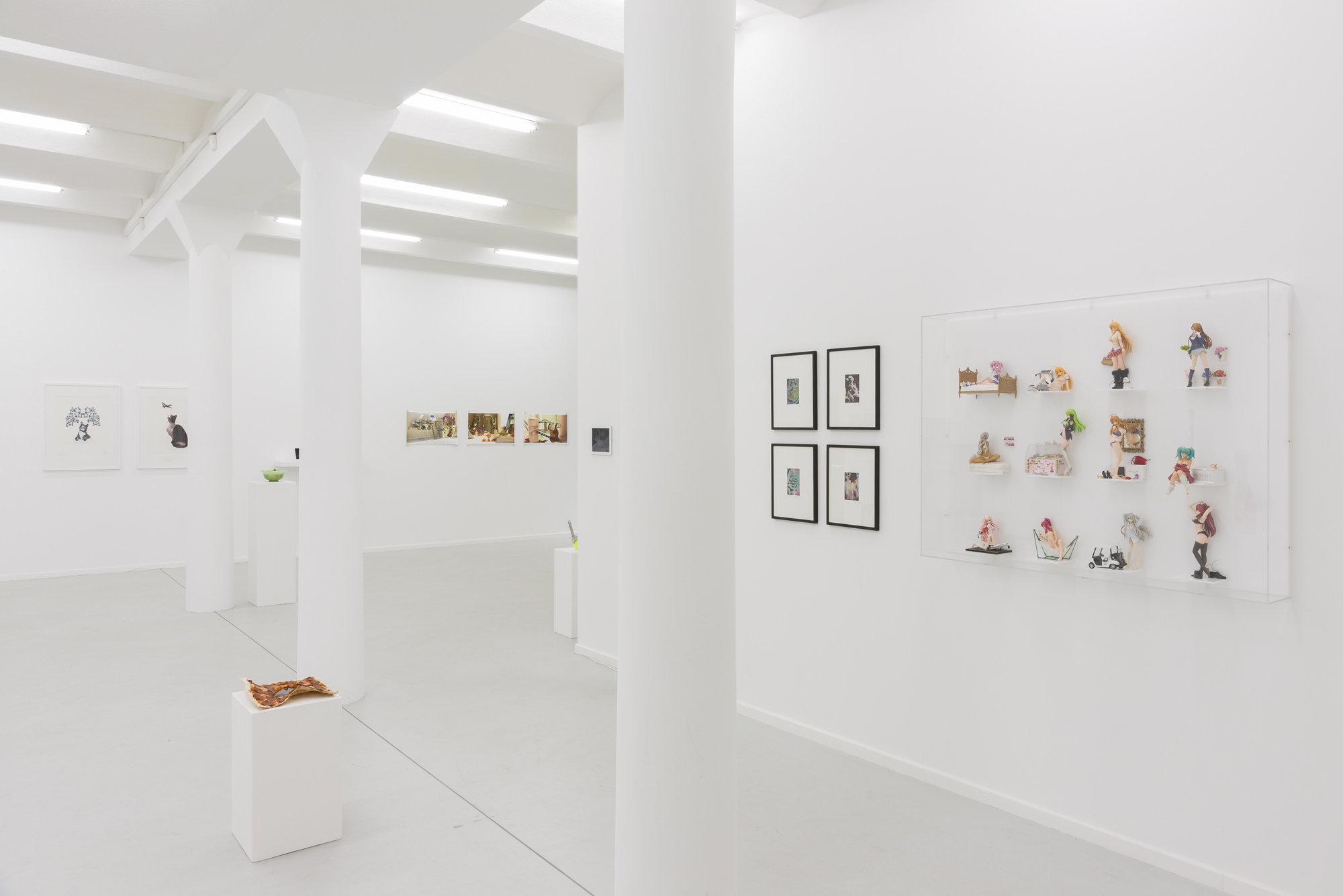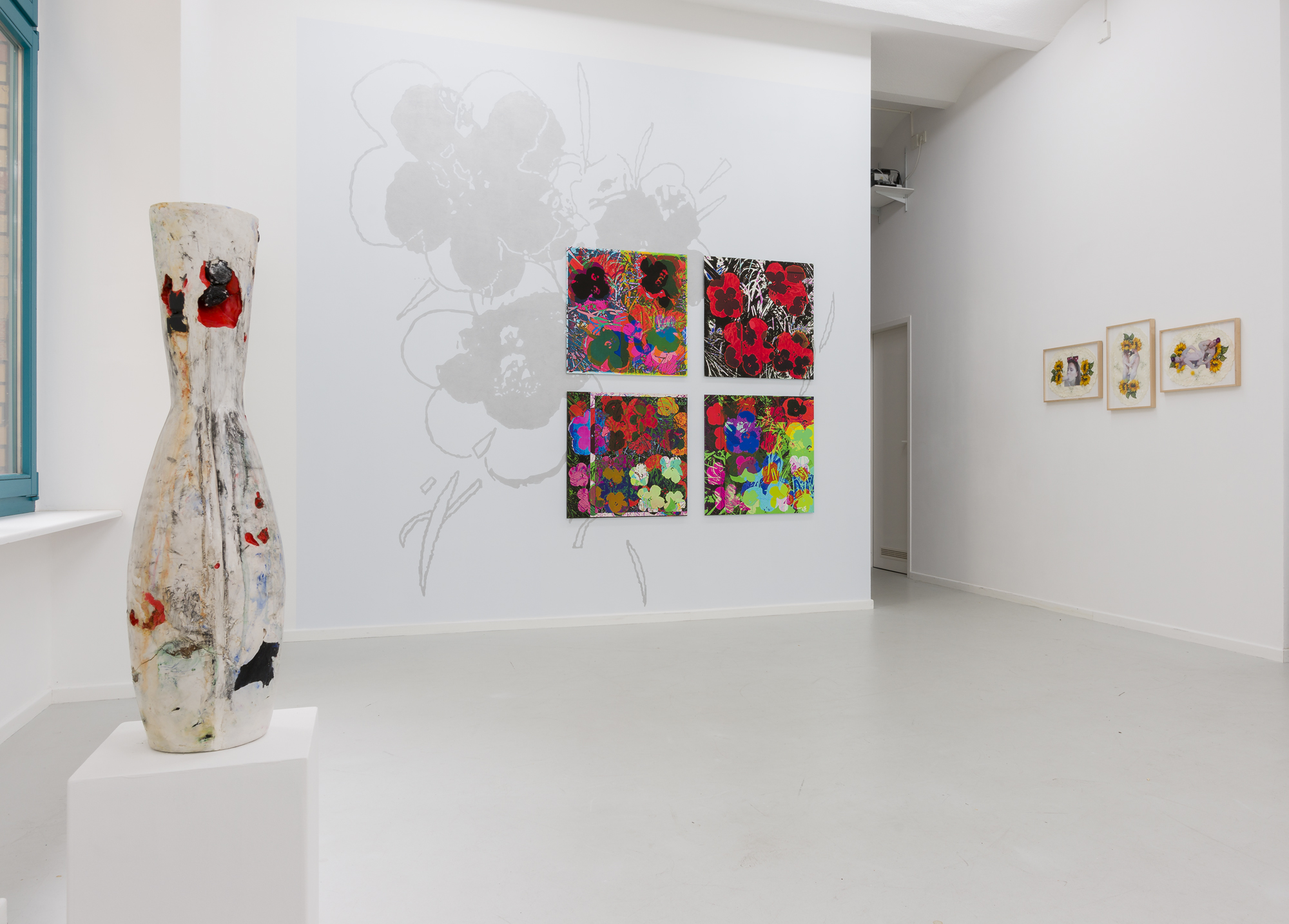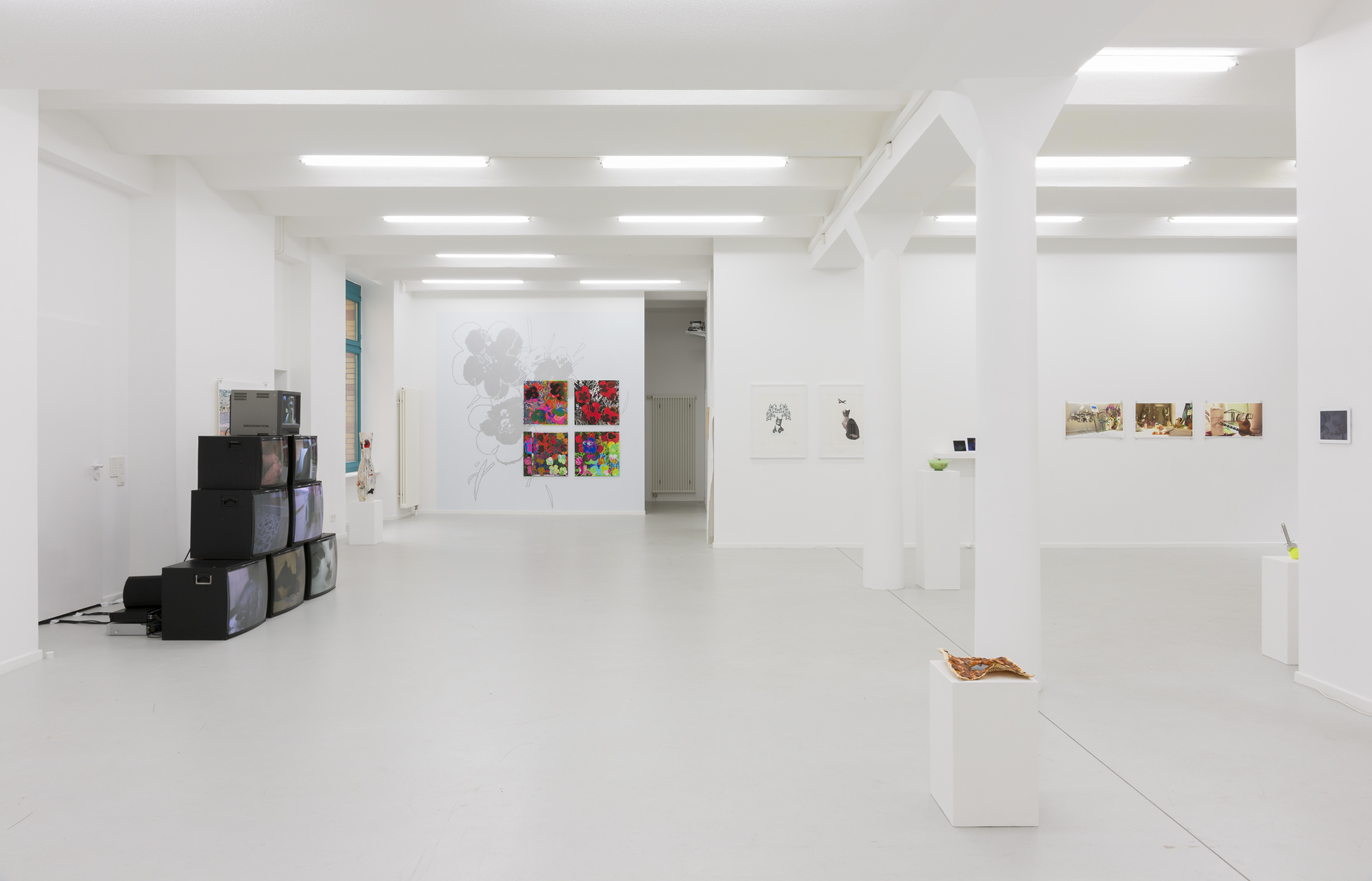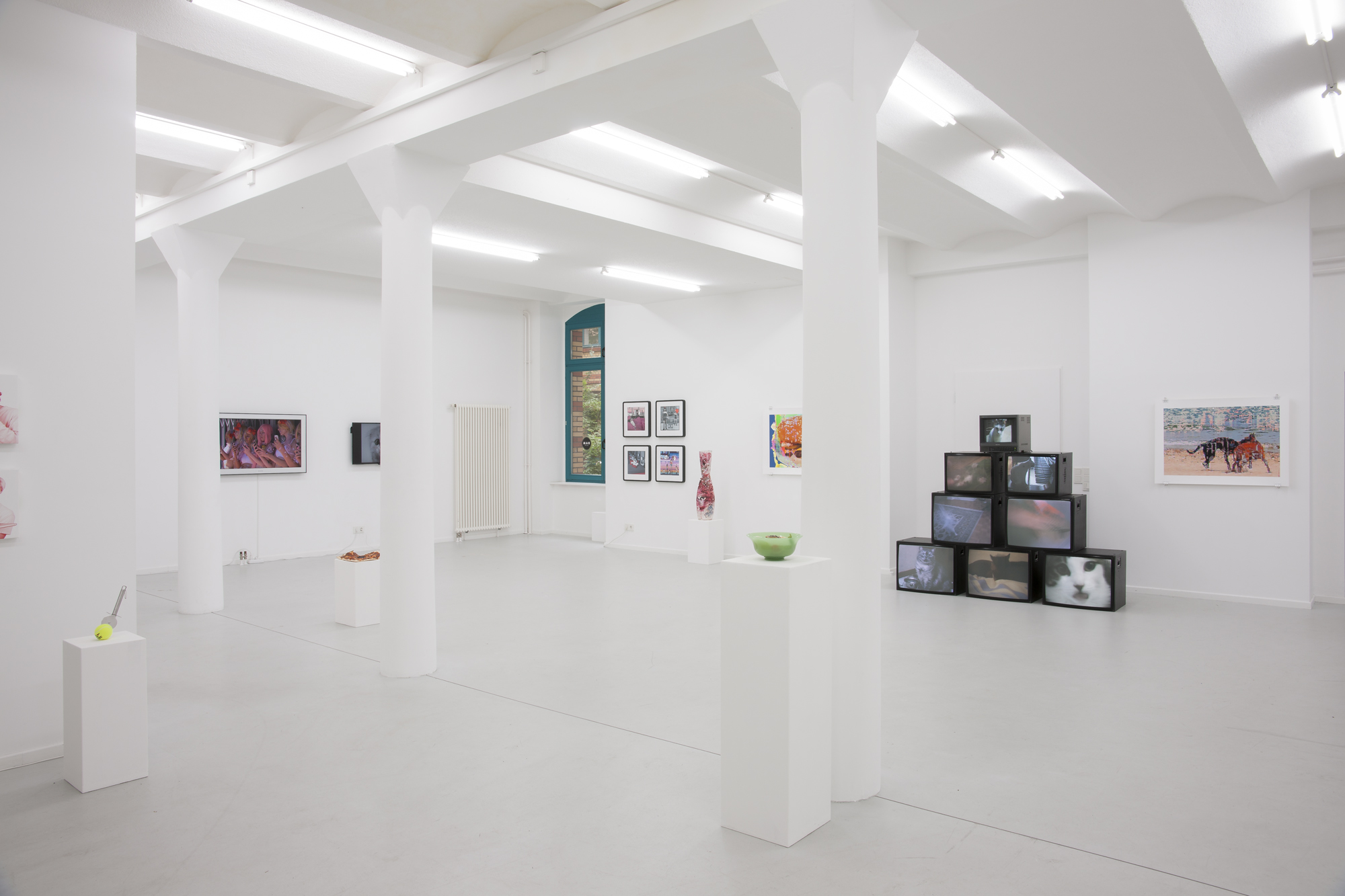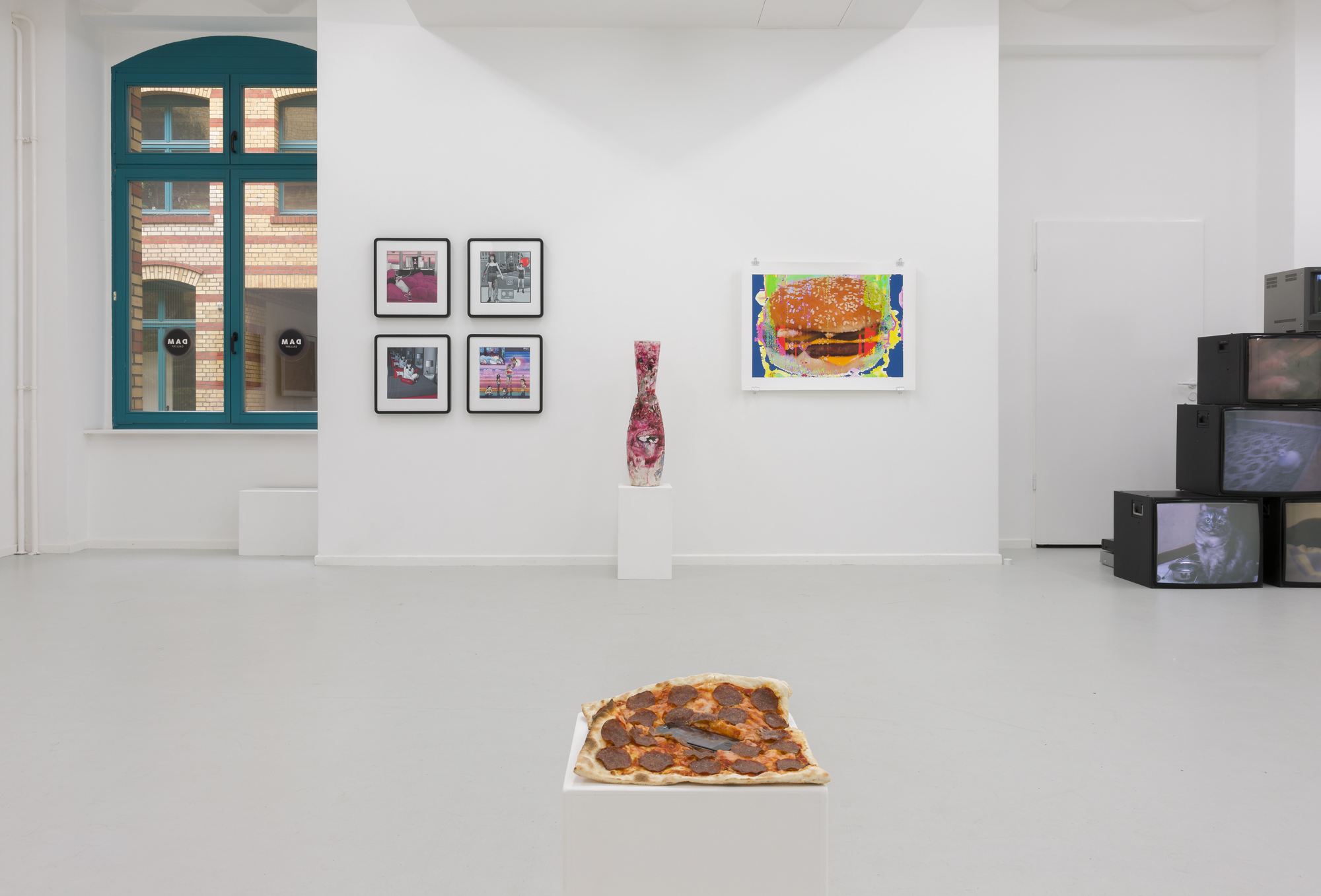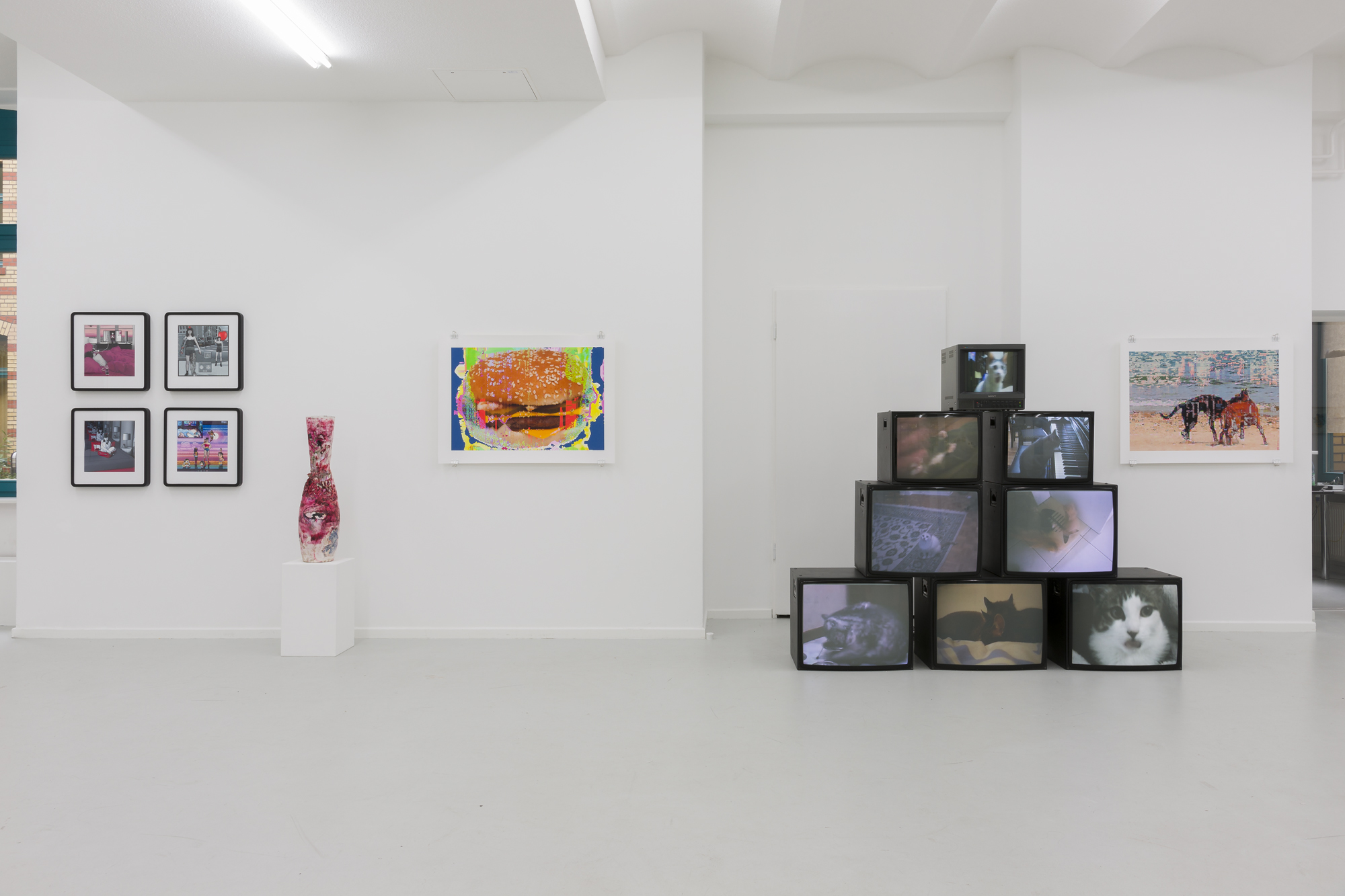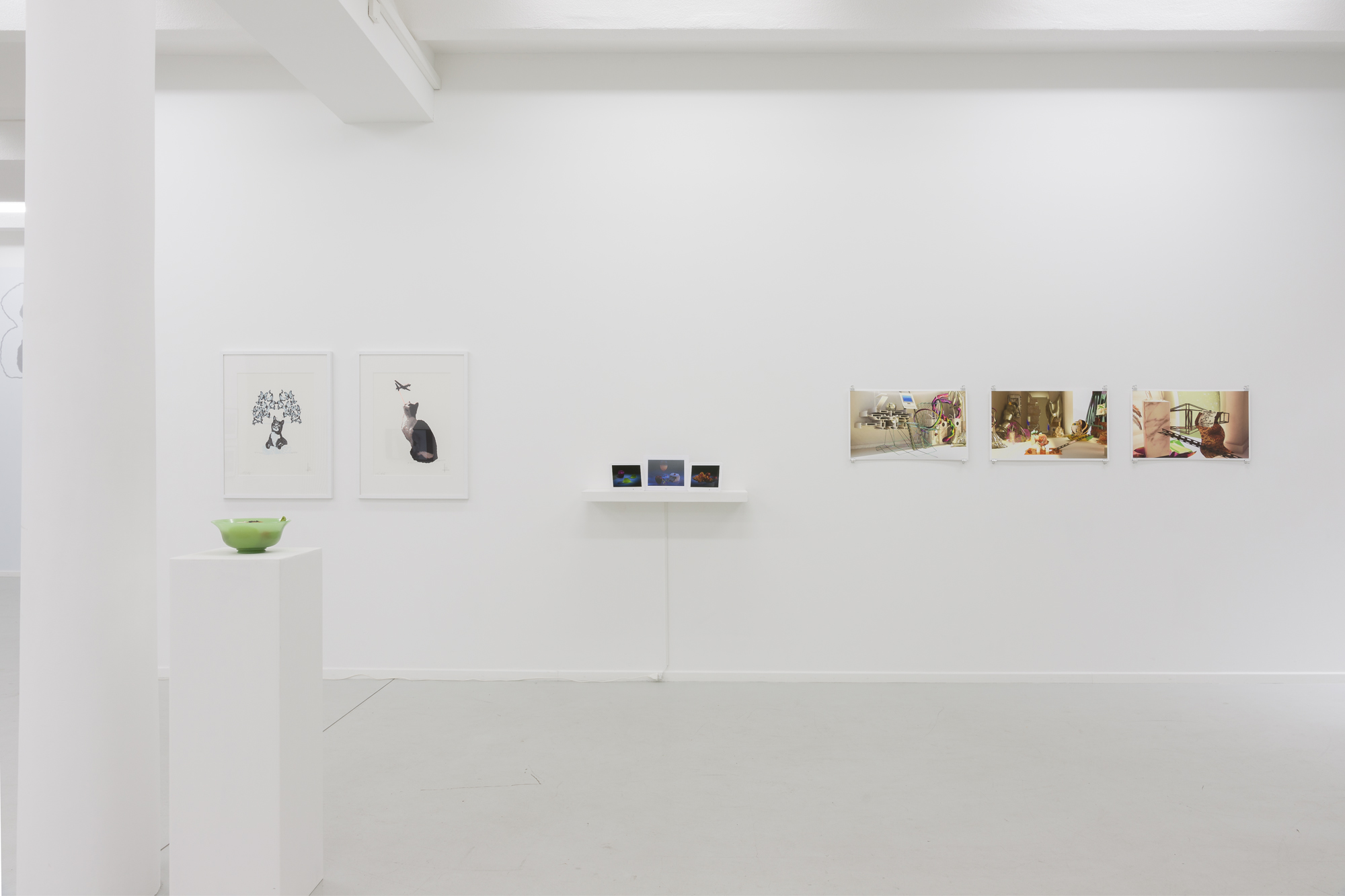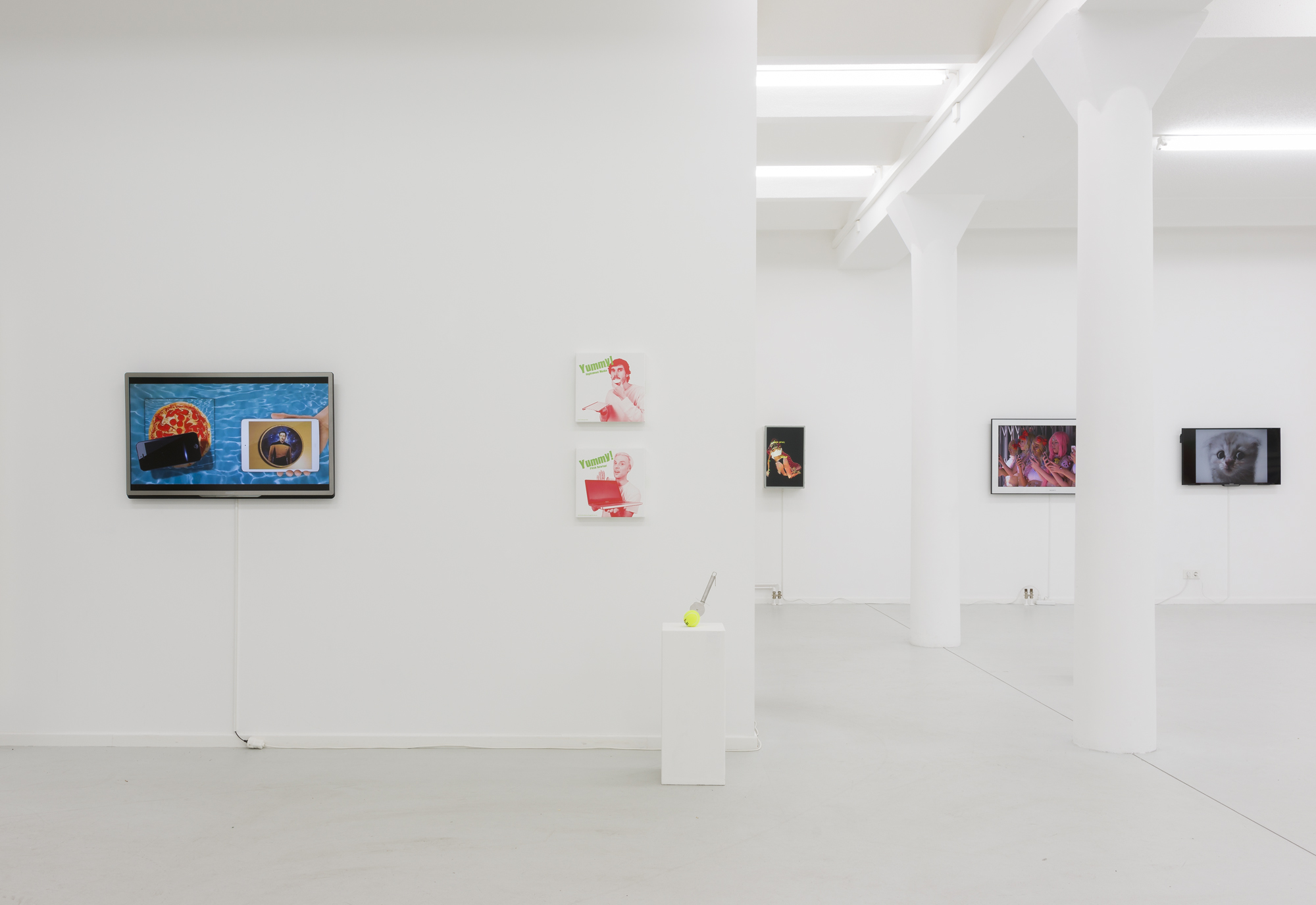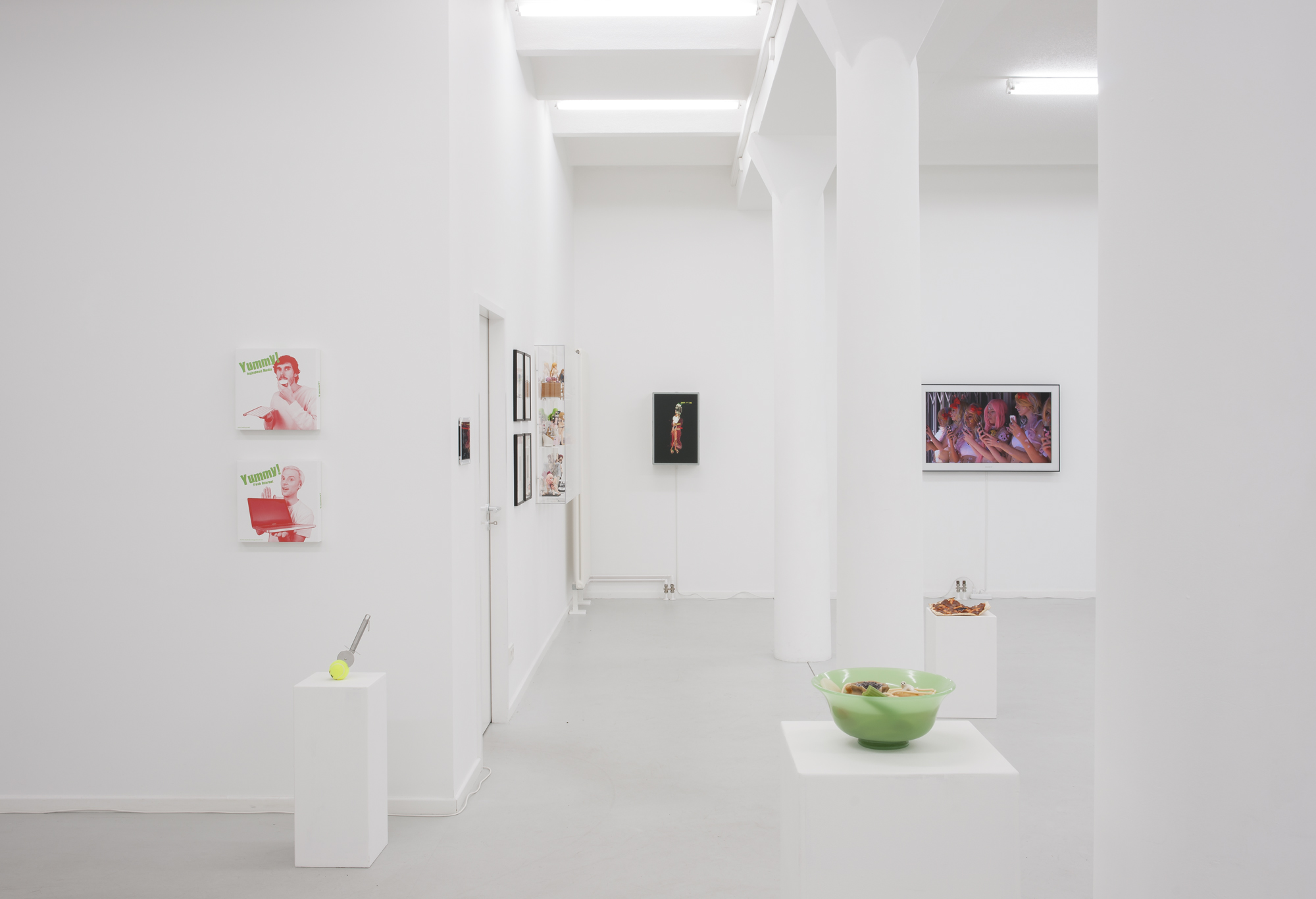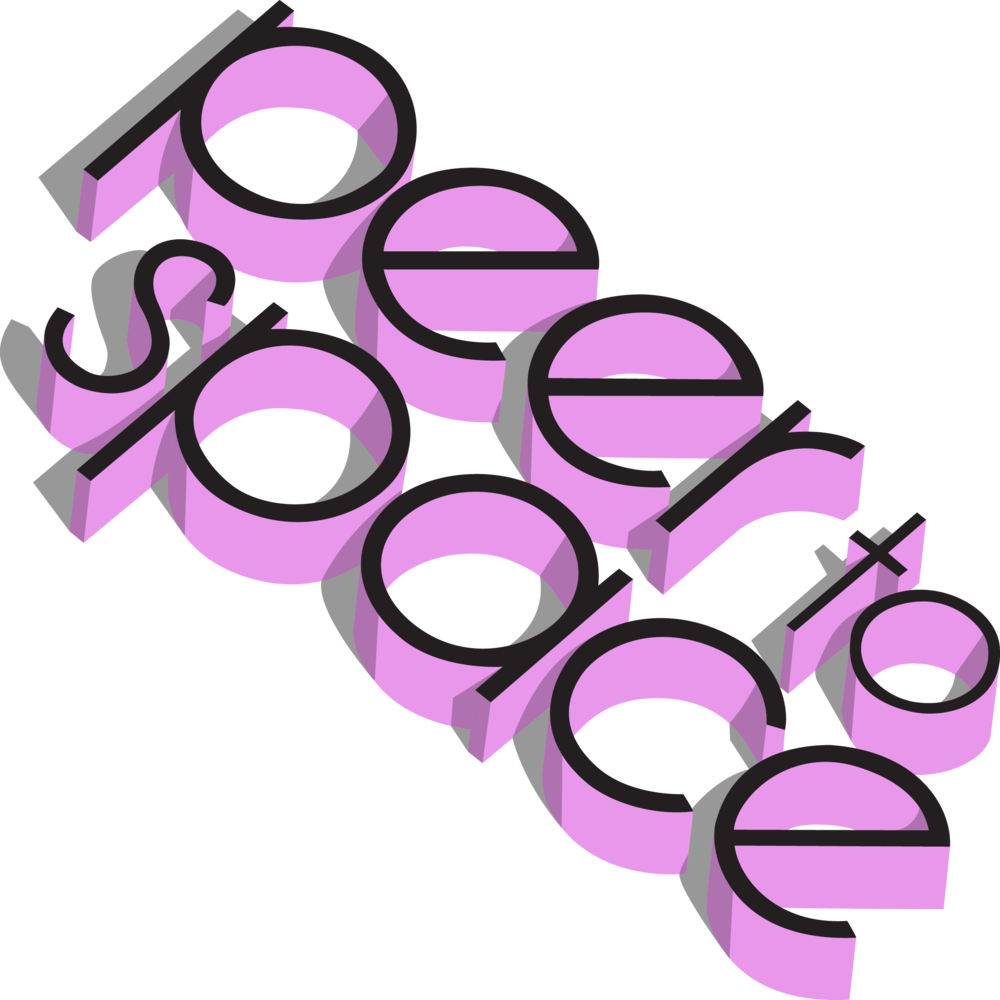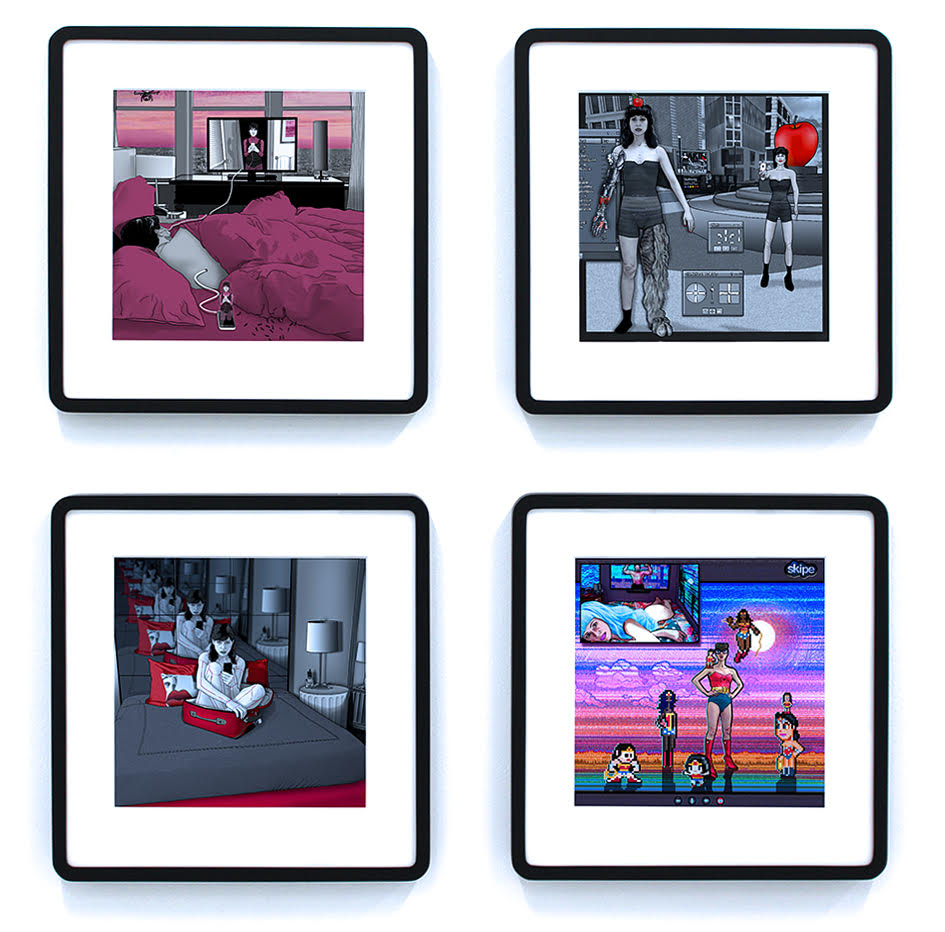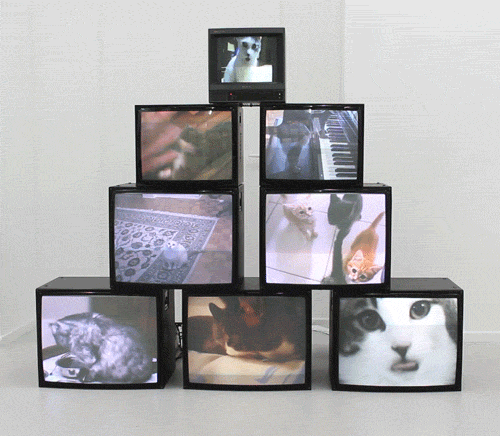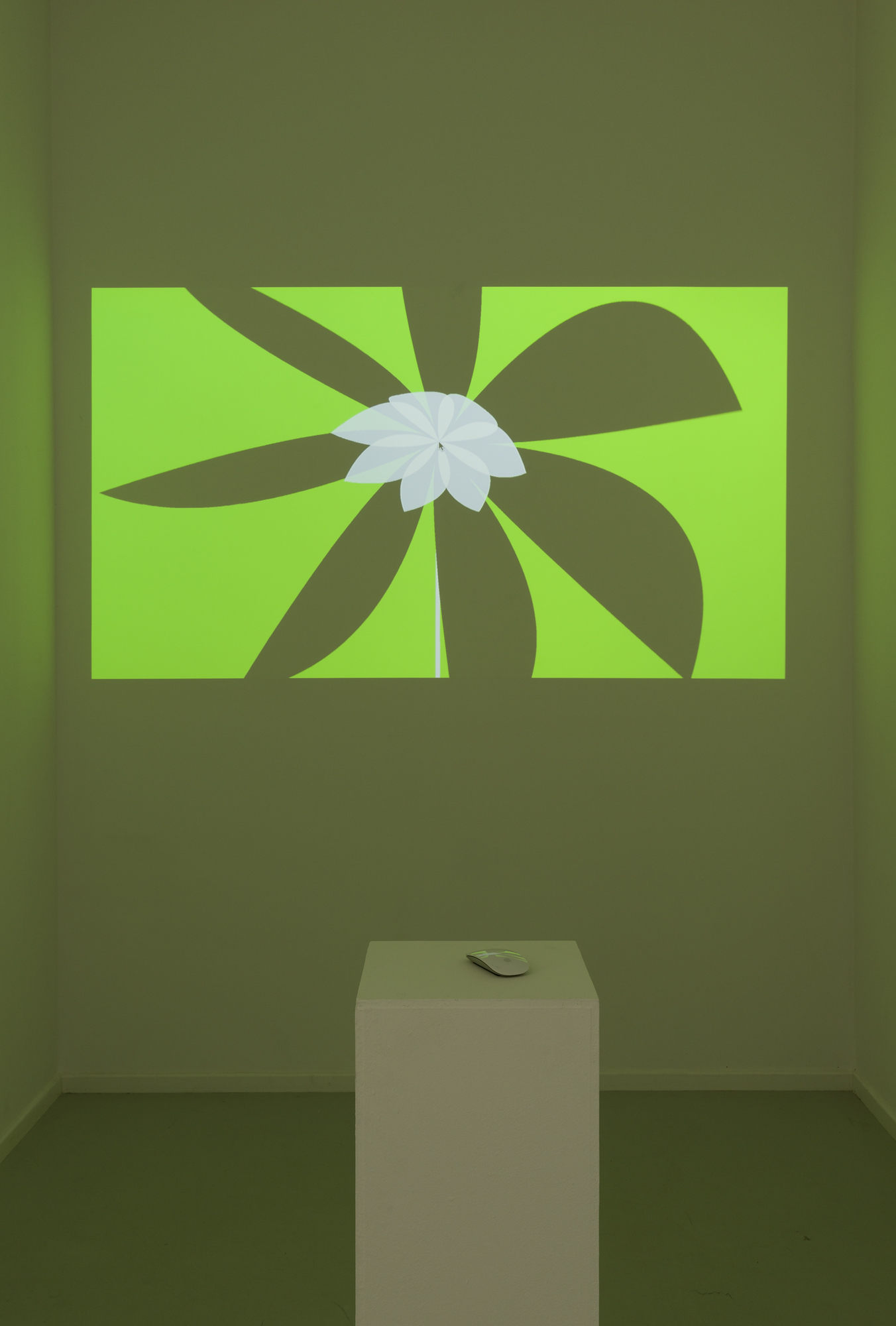Kate Durbin, Hello Selfie!, Documentation of a performance, 2015 / courtesy the artist / photo © Jessie Askinazi / DAM Gallery
PORN TO PIZZA – Domestic Clichés
Exhibition at DAM Gallery, Berlin
>>> Watch the documentation video of the exhibition PORN TO PIZZA - Domestic Clichés
Anthony Antonellis (US), Kim Asendorf and Ole Fach (DE), Domenico Barra (IT), Petra Cortright (US), Kate Durbin (US), Carla Gannis (US), Laurence Gartel (US), Emilie Gervais (FR), Claudia Hart (US), Paul Hertz (US), Faith Holland (US), Lindsay Lawson (US/DE), Jessica Lichtenstein (US), Patrick Lichty (US), Mark Napier (US), Eva Papamargariti (UK), Angelo Plessas (GR), Hayley Aviva Silverman (US), Cornelia Sollfrank (DE), Jonny Star (DE)
Curated by Tina Sauerlaender
PREVIEW PIZZA PARTY September 4, 2015, 7-10 PM
ARTIST TALK September 6, 2015, 3 PM
With coffee and cake and in English language
CURATOR´S TOUR & TALK September 18, 2015, 4 PM
EXHIBITION September 5 to October 24, 2015
Domenico Barra, PiratePornoMaterial 2nd 71, .gif, 2014 / courtesy the artist / DAM Gallery
"I am interested in subcultures and tabood human acts, their consumption in privacy and distribution in society. Porn is not a mere representation of sexual fantasies. Porn is the ultimate argument to address history, politics, art, or economy. I use copies of copyright protected contents to discuss industries and lobbies, production, distribution and appropriation, roles of sexes, money, porn as a proper expression of capitalistic society."
Domenico Barra
Many things sustain our personal comfort zones—eating delicious food, cuddling with cats, decorating homes, having sex, watching porn on TV and the Internet. Porn, Pets, Plants and Pizza, the 4P of domestic clichés, broadly found their way from real life into the virtual space of the Internet. The Word Wide Web became part of our daily surrounds. We are permanently linked to the world outside our living room. Information comes in and we post personal things and experiences. Domesticity extended from IRL to URL. But the Internet is not a mirror of real life, it is a hyperrealistic version. Like filling a photo album, we single out images, posting only the funniest cat video, the most arousing sex tape, the yummiest food or the coolest selfie.
Carla Gannis, Selfie Drawings 20 “Leia”, 24 "AKIN", 21 "Red Samsonite", 31 "peer-to-peer", 2015, archival digital pigment print, ink & colored pencil, 30,5 cm x 30,5 cm / courtesy the artist / DAM Gallery
“The Selfie Drawings” project addresses issues of branded identity, age and body estimation, surveillance culture, and online agency via selfie photography digitally collaged and redrawn. I’m emphasizing identity performance in relation to our constant uploads of “self” via social media platforms.“
Carla Gannis
In addition, photographs and digital images merge on our screens. Fictional and real world objects stand right next to each other. And some virtual simulations imitate reality to the extent that they can no longer be distinguished from photos. But how then do we know the truth? Imagery in the age of the Internet requires a change of thinking. Everything we see is real, because we see it, no matter how it is fabricated or which “parallel world” it belongs to. In terms of domesticity, this is especially hard to admit, because human behavior is deeply rooted in the sensual and tactile and not only in the visual: like eating, cuddling or having sex. Artists working with the Internet or digital means haven taken up the hyperrealistic images and the problematic of the real to reflect on the Internet’s and the Digital’s impact on today’s domestic spheres and personal comfort zones. Some artists exaggerate this imagery or play with the amateur aesthetics of found footage or YouTube videos to satirically emphasize the difference between the banal imagery and high art context. Others develop contrasting domestic versions and mix IRL and URL. The digital creation of objects and their surfaces plays an important role as well as producing real life sculptures with new materials in the context of the Internet and its virtual characteristics. These artworks often reference Pop Art with its inclusion of imagery from daily life or mass culture in art, the use of banal, comic, or even kitschy elements, exaggeration and irony, the appropriation of found materials, collage, mechanical (re)production, or experimenting with new techniques of materials from other contexts.
The exhibition PORN TO PIZZA — Domestic Clichés presents varied ways of artistic production in the age of the Internet, dealing with its features and its impact on every day culture. Here, domesticity is a very pervasive topic, because it reveals how private daily life has changed with the Internet and how the conflict of the “real vs. virtual” invades our personal comfort zones.
PRESS:
Jessica Lichtenstein, Lady Leisure, detail, 2011 / courtesy the artist / DAM Gallery
"Surrounded by social media and selfies, my art is a way for me to examine my own thoughts when it comes to the “gaze”, male or female, and the intersection of the "need to be looked at” vs. what others may call “objectification.” That subtle line between exploiting one’s sexuality without actually being exploited by it."
Jessica Lichtenstein
Reviews:
- TAZ (DE)
- MONOPOL (DE)
- HYPERALLERGIC (EN)
- BERLIN ART LINK (EN)
- THE CREATORS PROJECT (EN)
- SFAQ (EN)
- POSTMATTER (EN)
Blogs:
- ARTEFUSE (EN)
- FANTOM EDITIONS (EN)
Interview:
OPENING PICS ON FACEBOOK.
EXHIBITION VIEWS, DOCUMENTATION VIDEO AND GERMAN TEXT BELOW.
Claudia Hart, The Real and The Fake, 2015, Multimedia Sculpture / courtesy the artist / DAM Gallery
"The life-changing thing about the Internet is social media – and to be specific, mostly Facebook. Of course this is in many ways unfortunate due to it’s nasty corporate ethos, but here’s why: Facebook + Community + Conversation + Art Digitized = Power. Pure systems logic (:)), plus it works!"
Claudia Hart
Faith Holland, Analog Internet IRL, 2015, Sculptural Installation (documentation gif)
Installation video of Analog Internet IRL on VIMEO
Petra Cortright, Puparazzi, Video animation (still), 2009 / courtesy the artist and Foxy Production, New York / DAM Gallery
GERMAN TEXT VERSION
Paul Hertz, Burger, 2013, Archival pigment inkjet print on Epson Cold Press Bright Fine Art Paper, 60,96 x 91,44 cm / courtesy the artist / DAM Gallery
Viele Dinge formen unsere persönliche Wohlfühlzone: Gutes Essen, niedliche Katzen, hübscheMöbel, Kuscheln oder Sex. Ob Pizza, Porno, Haustiere oder Hello Kitty – diese Alltagsklischeeshaben längst ihren Weg vom realen Leben in die virtuelle Welt des Internet gefunden. Das World Wide Web ist Teil der täglichen Umgebung und verbindet uns ständig mit der Welt außerhalb unseres Wohnzimmers. Informationen erreichen uns und wir posten persönliche Dinge und Erlebnisse. Häuslichkeit hat sich vom realen Leben (IRL) in das virtuelle (URL) hinein ausgeweitet. Jedoch ist das Internet kein Spiegel der Wirklichkeit, es eine hyperrealistische Version davon. Wie bei einem Fotoalbum wählen wir Bilder aus und veröffentlichen nur denlustigsten Katzenfilm, das aufregendste Sexvideo, das appetitlichste Essen oder das coolste Selfie.
Angelo Plessas, BonjourTristesse.com, 2014, interactive website (still) / courtesy the artist / DAM Gallery
Zudem verschmelzen Fotografien und digitale Darstellungen auf unserem Bildschirm. Fiktion und Realität existieren nebeneinander und virtuelle Bildwelten sind von der Wirklichkeit kaum mehr zu unterscheiden. Aber wie erkennen wir die Wahrheit? Bilder im Zeitalter des Internet erfordern ein Umdenken. Alles, was wir sehen, ist real, weil wir es sehen, egal, wie es produziert wird oder welcher Parallelwelt es entstammt. In Bezug auf das häusliche Umfeld scheint diesbesonders schwer vorstellbar, weil menschliches Verhalten dort nicht nur im Visuellen, sondern vor allem im Haptischen und Physisch-Körperlichen verwurzelt ist: Essen, Kuscheln oder Sex.Künstler, die mit dem Internet oder digitalen Mitteln arbeiten, greifen die hyperrealistischen Bilder und die Problematik des Realen auf, um den Einfluss des Internets auf die häuslichen Sphären und persönlichen Wohlfühlzonen zu reflektieren. Einige benutzen die Ästhetik von im Netz gefundenen Amateurfilmen und verstärken sie satirisch, um auf die Unterschiedlichkeit zwischen banaler Alltagskultur und hoher Kunst hinzuweisen. Bildwelten werden aus einer Kombination von wirklichen und digitalen Bildern neu kreiert. Die virtuelle Erstellung von Objekten und ihren Oberflächen spielen eine wichtige Rolle, ebenso wie die Anfertigung von Skulpturen und Installationen mit neuen Materialien im wirklichen Raum. Diese Arbeiten offenbaren viele Bezüge zur Pop Art, wie die Verwendung von Bildwelten des täglichen Lebens und der Populärkultur im Kunstkontext, der Einsatz von vorgefundenen Materialen, Kitsch- oder Comic-Elemente, Collage, Übertreibung und Ironie, mechanische (Re)Produktion oder das Experimentieren mit neuen Techniken und Werkstoffen aus anderen Zusammenhängen.
Die Ausstellung „PORN TO PIZZA – Domestic Clichés“ präsentiert künstlerische Arbeiten, die sich mit den Auswirkungen des Internets und des Virtuellen auf unsere Alltagswelt beschäftigen. Das häusliche Umfeld ist hierbei von besonderer Bedeutung, weil es zeigt, wie sehr sich private Verhaltensweisen durch das Internet verändert haben und vor allem, wie sehr der Konflikt zwischen realen und digitalen Bildern in unsere heimischen Wohlfühlzonen eindringt.
Eva Papamargariti, Towards A New Shiny Internet Domesticity # 3, 2014, Print, 65x38 cm / courtesy the artist / DAM Gallery
EXHIBITION VIEWS by Marcus Schneider
